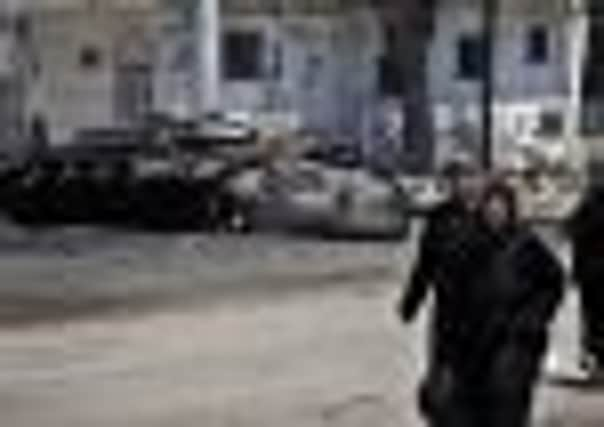Syrian military takes to the skies after losses on ground


Yesterday Syrian troops attacked a rebel-held town in the centre of the country with helicopter gunships and shelled other restive areas across the nation. The aerial assault targeted the strategic river crossing town of Rastan, which has resisted repeated government offensives for months, activists said.
“The regime is now using helicopters more after its ground troops suffered major losses,” said Rami Abdul-Rahman of the Britain-based activist group Syrian Observatory for Human Rights, which uses a network of sources on the ground. “Dozens of [military] vehicles have been destroyed or damaged since the end of May,” he said.
Advertisement
Hide AdAdvertisement
Hide AdRecent pictures from Syria have shown destroyed Russian-built main battle tanks, the heaviest land vehicles in the military’s arsenal. The destruction of such vehicles, as opposed to their dominance on the ground in the earlier stages of the uprising, indicates rebel forces have gained considerable numbers of anti-tank weapons, possibly from looted government armouries, or foreign sources.
As a result, the Syrian military appears to be relying on its Russian-made Hind gunship helicopters, as rebel forces still possess little in the way of anti-aircraft weapons.
According to videos posted online, fireballs of orange flame and black rubble exploded in the air as waves of shells pounded residential buildings in Homs yesterday. The sounds of shells whooshed through the sky and there was occasional sporadic machine gun fire.
The Observatory and another activist network, the Local Coordination Committees, also reported government shelling in the central provinces of Hama and Homs, where Rastan is located, as well as the southern region of Daraa, the northern province of Aleppo, and suburbs of the capital Damascus and Deir el-Zour in the east.
In Damascus, the state-run news agency SANA said authorities foiled an attempt to blow up a car rigged with 700kg of explosives in the Damascus suburb of Chebaa. Experts dismantled it, SANA said. Syrian activists say 13,000 people have been killed in violence since the uprising began in March 2011.
International envoy Kofi Annan said yesterday he was “gravely concerned” about the latest violence, specifically the shelling of Homs and reports of mortar bombs, helicopters and tanks in Haffeh, near the coast.
In another indication of widening concern over the implosion of the country, Israel’s deputy military chief warned that Syria’s large chemical weapons stocks could be trained on the Jewish state. Major General Yair Naveh said Syria has the largest arsenal of chemical weapons in the world. If the Syrians had the chance, he said, they would “treat us the same way they treat their own people”.
Syria has not acknowledged possessing chemical weapons, so the exact size of its arsenal is not known. Among other things, Israel is worried that such weapons could fall into the hands of anti-Israel militants should the regime crumble.
The British Foreign Secretary, Willian Hague, told parliament that the UK would not rule out the use of an international military intervention in Syria to end the violence.